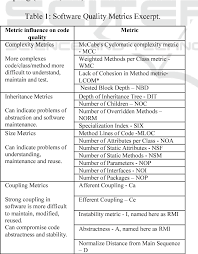Driving Innovation: The Path to Sustainable Development
The Importance of Development in Today’s World
Development is a crucial aspect of progress in today’s rapidly evolving world. It encompasses growth, improvement, and advancement in various areas, including technology, infrastructure, education, and society as a whole.
Technological Development
Technological development plays a significant role in shaping our modern society. Advancements in technology have revolutionized how we communicate, work, and live. From the invention of the internet to breakthroughs in artificial intelligence and robotics, technology has transformed every aspect of our lives.
Economic Development
Economic development is essential for the prosperity of nations and individuals. It involves creating opportunities for growth, increasing productivity, and reducing poverty. A strong economy can provide better living standards, employment opportunities, and access to essential services for its citizens.
Social Development
Social development focuses on improving the well-being of individuals and communities. It includes initiatives to promote equality, education, healthcare, and social justice. By investing in social development programs, societies can create a more inclusive and equitable environment for all members.
Environmental Development
Environmental development aims to protect natural resources and preserve the planet for future generations. Sustainable practices such as renewable energy sources, conservation efforts, and waste reduction are crucial for mitigating environmental degradation and combating climate change.
Personal Development
Personal development refers to self-improvement and growth on an individual level. It involves acquiring new skills, expanding knowledge, setting goals, and enhancing personal well-being. Continuous personal development is key to achieving success and fulfillment in life.
In conclusion, development is a multifaceted process that drives progress and innovation across various domains. By embracing development in all its forms – technological, economic, social, environmental, and personal – we can create a brighter future for ourselves and future generations.
9 Common Questions About Development: Definitions, Synonyms, and Concepts
- What is the other word for development?
- What is another word for development?
- What is the synonym word for development?
- What are the different means of development?
- What are the 3 types of development?
- What is the main concept of development?
- What is the simple definition of development?
- What can I say instead of developing?
- What is development and examples?
What is the other word for development?
An alternative term often used interchangeably with “development” is “progress.” Both words convey the idea of growth, improvement, and advancement in various aspects of life, whether it be technological, economic, social, or personal. “Progress” implies a forward movement towards a better state or condition, reflecting the continuous evolution and positive change that development strives to achieve in our rapidly changing world.
What is another word for development?
An alternative term often used interchangeably with “development” is “progress.” Progress implies forward movement, growth, and improvement in various aspects of life, whether it be technological advancements, economic prosperity, social well-being, or personal growth. Both development and progress signify positive change and evolution towards a better future.
What is the synonym word for development?
A common synonym for the term “development” is “progress.” Both words convey the idea of growth, advancement, and improvement in various aspects of life, whether it be technological, economic, social, or personal. “Progress” suggests moving forward and making positive changes towards a better future, much like how “development” implies evolution and enhancement over time. These synonyms are often used interchangeably to describe the continuous process of building and evolving in different spheres of society.
What are the different means of development?
The question “What are the different means of development?” often arises in discussions about progress and growth. Development can be achieved through various means, including technological advancements, economic reforms, social initiatives, environmental sustainability efforts, and personal growth strategies. Each of these avenues plays a crucial role in driving positive change and improvement in different aspects of society. By exploring and utilizing diverse means of development, individuals and communities can work towards creating a more prosperous, equitable, and sustainable future for all.
What are the 3 types of development?
Development can be categorized into three main types: economic development, social development, and environmental development. Economic development focuses on improving the economic well-being of individuals and societies through factors such as increased productivity, job creation, and poverty reduction. Social development aims to enhance the quality of life for people by addressing issues like education, healthcare, and social justice. Environmental development centers on sustainable practices that protect natural resources, reduce pollution, and promote conservation efforts to ensure a healthier planet for future generations. Each type of development plays a crucial role in shaping a more prosperous, equitable, and sustainable world.
What is the main concept of development?
The main concept of development revolves around the idea of growth, progress, and improvement in various aspects of society. Development encompasses not only economic advancement but also social, technological, and environmental enhancements. It aims to create sustainable and inclusive systems that benefit individuals, communities, and the planet as a whole. By focusing on building capacity, reducing inequalities, and promoting well-being, development seeks to create a better future for all by addressing the diverse needs and aspirations of people worldwide.
What is the simple definition of development?
Development can be defined as the process of growth, progress, or advancement in various aspects of life. It encompasses improvement and expansion in technology, economy, society, environment, and personal well-being. In simple terms, development signifies positive change and evolution towards a better and more prosperous future. It involves continuous efforts to enhance living standards, create opportunities for growth, and achieve sustainable outcomes for individuals and communities.
What can I say instead of developing?
When seeking alternative terms to use instead of “developing,” one may consider phrases such as “progressing,” “evolving,” “advancing,” or “growing.” These synonyms can effectively convey the idea of improvement or change over time in a more nuanced and varied manner. Selecting the most suitable synonym depends on the specific context and desired tone of the communication. By exploring different options, individuals can enhance their vocabulary and express ideas with greater precision and clarity.
What is development and examples?
Development refers to the process of growth, advancement, and improvement in various aspects of society, technology, economy, and individual well-being. It encompasses progress towards achieving better living standards, increased opportunities, and positive changes in different spheres of life. Examples of development include technological advancements such as the evolution of smartphones and artificial intelligence, economic growth seen in emerging markets and infrastructure projects, social development initiatives promoting education and healthcare access for all, and personal development through acquiring new skills and knowledge to enhance one’s capabilities and potential. Development is a continuous journey towards creating a more prosperous, equitable, and sustainable future for all.





